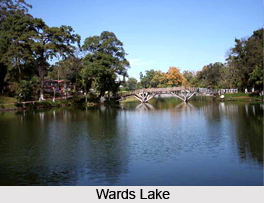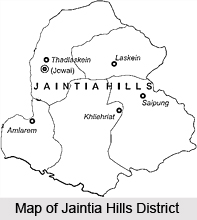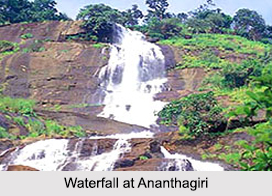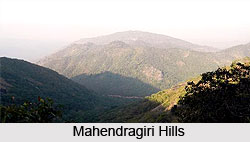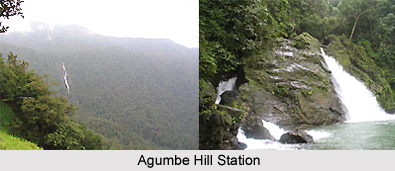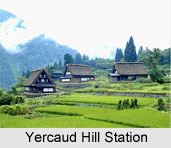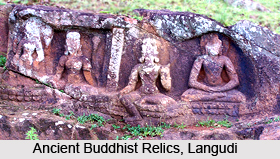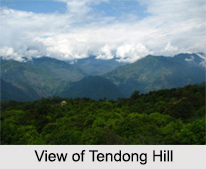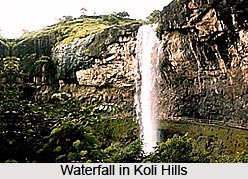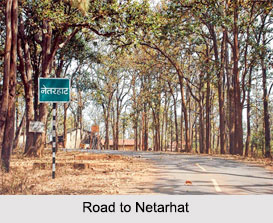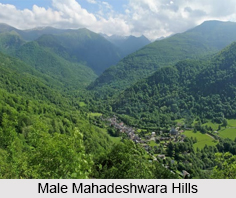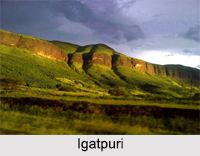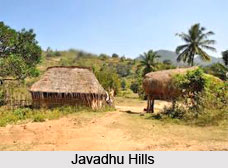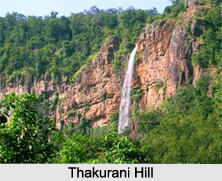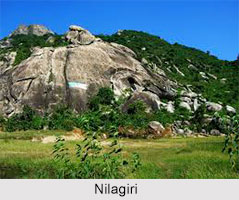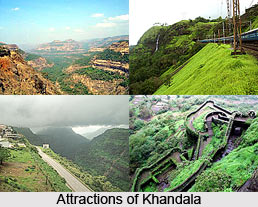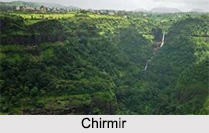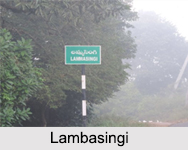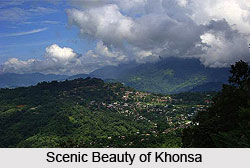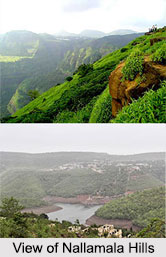Introduction
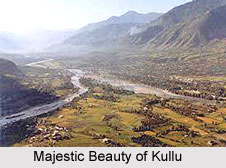 Kullu is a popular hill station in Kullu District of Himachal Pradesh. Kullu lies well guarded by the Pir Panjal range of the Himalaya Mountains. Kullu is wonderfully gifted by the nature. The marvellous landscapes, hospitable, peaceful and co-operative people having distinct life style and culture are some of the points that separate Kullu from rest of the hill stations.
Kullu is a popular hill station in Kullu District of Himachal Pradesh. Kullu lies well guarded by the Pir Panjal range of the Himalaya Mountains. Kullu is wonderfully gifted by the nature. The marvellous landscapes, hospitable, peaceful and co-operative people having distinct life style and culture are some of the points that separate Kullu from rest of the hill stations.
History of Kullu
A number of legends are associated with the origin of Kullu. It is believed that the Hindus in primitive eras considered Kullu to be the furthest limitation of human tenancy `Kulantapitha` and its original name also has been mentioned in the great Indian epics like the Ramayana, Mahabharata, Brihat Samhita and also in the ancient scripture of the Vishnu Purana. Kullu is considered as one of the most ancient places after Kashmir and Kangra valleys. As per legends, Manu landed on Kullu after the deluge and resided here. Hence the place was also referred to as Manu-Alaya or the present day Manali. The history of Kullu also mentions Behangamani Pal.
Geography of Kullu
Kullu is located in the banks of Beas River at an elevation of 4469 feet. The gurgling Beas River flows throw the stony river bed even as the semi-tropical forests spell mystery and beauty in the valley. Lying almost 240 kilometres from Shimla, Kullu has its location on the west side of majestic Himalayas. The primary attraction of this hill station is its awe-inspiring splendour. A wide mountainous ridge including some temples bounds the eastern side of Kullu. Towns of Mandi and Bhuntar bound the southern part of the Kullu. Another very popular town of Manali is located in the north of Kullu. Since it is a hill station, the summers in the Kullu district are pleasant with the temperature rising to a maximum of 20 degree Celsius while the minimum remains 18 degrees.
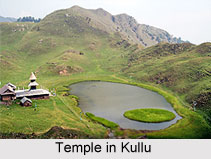 Kullu has its share of summer from March to June. Winter sets in from October and stays till February. These months are cold and dry with the temperature falling to 5 degree Celsius and the maximum temperature is 16 degrees. The mountainous landscape is not devoid of rain. The rainy season sets in July and Kullu enjoys the rainy spells will September. The monsoon is largely responsible for its semi-tropical vegetation as well. The average rainfall is 80 cm. Snowfall occurs during the winters. Although a mountainous region but the terrain of Kullu is suitable for agriculture as well. Horticulture is an important source of sustenance for the inhabitants of Kullu. Apples are grown is large quantities in Kullu. Besides, the natives here are also engaged in handloom industries.
Kullu has its share of summer from March to June. Winter sets in from October and stays till February. These months are cold and dry with the temperature falling to 5 degree Celsius and the maximum temperature is 16 degrees. The mountainous landscape is not devoid of rain. The rainy season sets in July and Kullu enjoys the rainy spells will September. The monsoon is largely responsible for its semi-tropical vegetation as well. The average rainfall is 80 cm. Snowfall occurs during the winters. Although a mountainous region but the terrain of Kullu is suitable for agriculture as well. Horticulture is an important source of sustenance for the inhabitants of Kullu. Apples are grown is large quantities in Kullu. Besides, the natives here are also engaged in handloom industries.
Administration of Kullu
The town of Kullu is the administrative capital of Kullu District. The offices of the Deputy Commissioner, Superintendent of Police, Additional District Manager and the district courts are situated here. The administrative units of Kullu district include tehsils, sub-tehsils, blocks, towns and villages. In addition to this there are three Assembly Constituencies and these are Anni, Kullu and Banjar.
Culture of Kullu
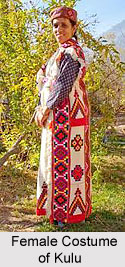 Culture of Kullu deals with the fairs and festivals of the region which are prominent scenes in this land of tribal hills, Himachal Pradesh.
Culture of Kullu deals with the fairs and festivals of the region which are prominent scenes in this land of tribal hills, Himachal Pradesh.
The dresses, jewelleries, flowers etc make the land very colourful. In all the festivals the local people organize fairs in which they pay homage to their local gods. They offer puja to their Gods because of the enhancement in their crop, rain, etc.
They also worship God in case of birth of a son and recovery from sickness, etc. their social and cultural life revolves around their Gods and Goddesses. There are numbers of Gods worshipped by different people. Because of this reason Kullu can also be called as the land of Gods.
People of Kullu
Some characteristics of the residents of Kullu can be mentioned as truthfulness, their simplicity, hospitality, etc. the people living there are very helpful, they have self-respect. They come forward to help any one. They are attracted to flowers, festivals, dances and colorful occasions. They believe in total literacy and in this process they also improved their economic condition. The primary occupation of these people can be said as agriculture and horticulture. But in present days people are often seen engaged in other profession like tourism and hotel business.
Costume of Kullu
Kullu is a cold place and that is why people should wear warm clothes throughout the year. Previously the men folk were more interested in their traditional clothes like chola, dora, suthan, topa with folded binket i.e. "lachhoo" but in these days they are inclined to pants and shirts. The women still wear blanket or patto over their dress. Among the special dresses that are worn at the time of festivals "phoolwala" blanket is important. As headdress Dhatu and Thilu are important. This is regarded as the cottage industry of Kullu. There are 300 co-operative industries present here only because of this purpose. About 30000 workers have been earning their living directly or indirectly from it. Till now about Rs.25 crores have been invested in it. Kullu shawl is known for its quality, design and reasonable cost. These shawls are made out of the imported yarn in different colours and designs. There are some shawls, which are too some extent low in price because of their less work in the body. Kullu pattoo is something heavier and larger than a shawl. These are very beautiful in their look. Kully women are usually very fond of pattoo. They use this over their clothes and pin at both the ends. There is one needle known as Boomani, which is an important part. This is used below the shoulders. All of these are essential part of their dress. Plain Chitru and are generally very popular. The cost of this varies with the superiority of its design and also colour scheme. The bed blankets are usually rough and heavier. These are called as `Dohru`.
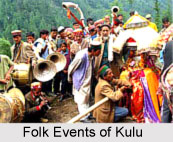 Ornaments of Kullu People
Ornaments of Kullu People
Both men folk as well as womenfolk used the ornaments in earlier days. But womenfolk are still using these with full pride. They usually use gold and silver ornaments. Women used a long variety of jewelleries, which includes a long list. Among nose rings Laung i.e. a nose stud Kumshi, Balu, etc. are important. Among head ornaments Tunki, Tara, Tikka are notable. Khundi and Bali are Ear ornaments.
Chanderhat, Jaumala, Champakali, Damku Skkamala i.e. garland of coins, Guthi or ring, Mundri, Bichhwa. Taka, Kangnu, Maritadi, Tore and Boomani i.e. silver or gold needles with chains are different neck ornaments. The other interesting ornaments are finger ornaments, arm ornaments and ornament for blanket.
Dances of Kullu
Dance takes an important part in the lives of Kullu people. They do not miss any opportunity to dance and thus they dance on all fairs, festivals and happy occasions. They dance in a circle in the accompaniment of band of musicians. Dancing usually followed with singing. On special occasion, dancers wear special dresses. Both women and men take part in the dance. The most popular dance of Kullu is `Nati`. Different dances have different steps and theta is why variety can be maintained. Some different forms of dances can be mentioned as Dhili Nati, Pheti nati, Dohri nan, Banthara, Luddi, Lamber, Pekha, Sangla, Lahalri, Hulki, Bakhali, Rujhanka, Lahuli, Chambyali, Kharyat etc.
Orchestra of Kullu
Generally seven to nine musical instruments used in the Nati orchestra. The following can be named as the most used musical instruments. The pipe or shehnai,The drums or dhol, Nagara and dhauns,Trumpets or kamal, Ranshringa,Bhana or A bronze round disc struck with a stick, etc. This piper or "hesi" leads the orchestra. Any desired changes in the orchestra or any dance movement are initiated by him only.
Folk Songs of Kullu
Kullu folk songs are very melodious. They have their own meaning that is very simple to understand. The subjects of the songs touch all aspects of life. As they contain story and beautiful tunes they became very popular among the folks. These help the people to forget their sorrow and mingle with the society. There are songs for every mood. In addition to the folk songs, `Liunan and Bhourun` are also sung. These are sung on the occasion of fairs and festivals in the fields, etc. the subject of Laman deals with love while the main theme of Bhouran is hope, frustration. Separation, reproach, sarcasm, etc. an open vast place is generally required to sung all these are they are sung in moderately high pitch. Al these are sung by one only. The style is little different from other folk songs.
Art and Craft of Kullu
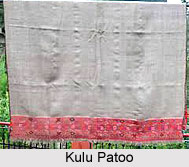 Art and craft takes an important part in kullu people`s life. The handicrafts are very in thing in these areas. Shawls, mufflers, caps, conical baskets, poolas and jackets made by local people always help to increase the economic condition of the place. They are made by thousands of craftsmen spread all over the valley. Kullu shawls, muffiers and caps have also won international fame. As a whole these are very colourful and one of the reason to make the place popular.
Art and craft takes an important part in kullu people`s life. The handicrafts are very in thing in these areas. Shawls, mufflers, caps, conical baskets, poolas and jackets made by local people always help to increase the economic condition of the place. They are made by thousands of craftsmen spread all over the valley. Kullu shawls, muffiers and caps have also won international fame. As a whole these are very colourful and one of the reason to make the place popular.
Kullu Procession
This is usually a procession of Kullu gods. The making of Namdas is the process by beating the wet wool. These are very durable and warm. No embroidery is done on Kullu namdas. Gudmas are made of thick yarn of `Biyang wool`. After weaving, both sides of the gudmas are combed to make it soft and hairy. Its border is stitched by a co lowered Dora. These items of handicrafts are prepared by the Himachal Khadi Manadal.
Temples in Kullu
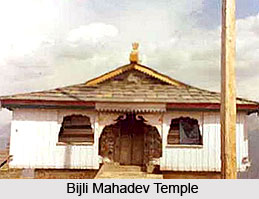 Temples in Kullu are really popular and attract a large number of devotees from distant places. Kullu Valley is popularly known as the Valley of the Gods. Kullu is considered as a perfect picturesque hill station of Himachal Pradesh with wonders hidden in every corner. Besides, Kullu is also known for its various temples. There are innumerable Hindu temples, ranging from different genre and subtle artwork. With colossal wooden framing and with their sheer serenity the different temples of Kullu further enhance the splendor of the place. Some of the popular ancient temples of Kullu are as follows -
Temples in Kullu are really popular and attract a large number of devotees from distant places. Kullu Valley is popularly known as the Valley of the Gods. Kullu is considered as a perfect picturesque hill station of Himachal Pradesh with wonders hidden in every corner. Besides, Kullu is also known for its various temples. There are innumerable Hindu temples, ranging from different genre and subtle artwork. With colossal wooden framing and with their sheer serenity the different temples of Kullu further enhance the splendor of the place. Some of the popular ancient temples of Kullu are as follows -
Bijli Mahadev Temple: Loaded with unusually sparkling features, Bijli Mahadev Temple enshrines Lord Shiva in the form of a Shiva linga.
Bajaura Temple: Bajaura Temple, standing by the side of the Beas River, is yet another shrine dedicated to Lord Shiva.
Chandi Devi Temple: Chandi Devi Temple houses a shrine of Lord Shiva, believed in Hindu mythology as the consort to Chandi Devi.
Gaurishankar Temple: Gaurishankar Temple is meticulously carved, bearing proof in its each angle, constructed in 12th century.
Parashuram Temple: Resembling a fort, the Parashuram Temple exhibits the Pahari style of architecture.
Triyuginarain Temple: Built in three levels, Triyuginarain Temple is one of the popular temples that look imposing from every perspective.
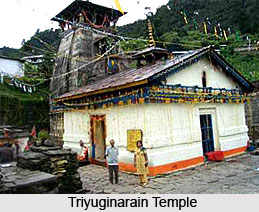 Sandhya Devi Temple: Sandhya Devi temple is a product that involved numerous hands, erected on the ruins of an old temple.
Sandhya Devi Temple: Sandhya Devi temple is a product that involved numerous hands, erected on the ruins of an old temple.
Vaishno Devi Temple: Vaishno Devi Temple is involved in numerous charity works, dedicated to Goddess Durga.
Raghunath Temple:
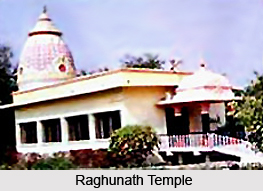 The commanding deity of Kullu is Raghunath Ji. Raghunath temple therefore holds considerable importance to the people of Kullu. The Dusshera festival held in the town is held in the respective temple`s name. Legends speak of the idol in the temple that is the same one that was used by Lord Rama himself at the time of Ashwamedh yagya and was brought from Tretnath temple of Ayodhya. Raghunath Temple was constructed in 1660 A.D. with an amalgamation of Pahari and pyramidal style of architecture. Everyday the puja is held five times a day; round the year, 45 festivals are held. It is said that Raja Jagat Singh drank charanamrit (the water drunk after washing the feet of the divine, regarded extremely holy) of the idol for 42 days and was exonerated from the evil effect from the curse of a Brahmin Durga Dutt.
The commanding deity of Kullu is Raghunath Ji. Raghunath temple therefore holds considerable importance to the people of Kullu. The Dusshera festival held in the town is held in the respective temple`s name. Legends speak of the idol in the temple that is the same one that was used by Lord Rama himself at the time of Ashwamedh yagya and was brought from Tretnath temple of Ayodhya. Raghunath Temple was constructed in 1660 A.D. with an amalgamation of Pahari and pyramidal style of architecture. Everyday the puja is held five times a day; round the year, 45 festivals are held. It is said that Raja Jagat Singh drank charanamrit (the water drunk after washing the feet of the divine, regarded extremely holy) of the idol for 42 days and was exonerated from the evil effect from the curse of a Brahmin Durga Dutt.
Bhaikhali Temple: Bhaikhali Temple is loaded with legendary stories, which is quite a usual phenomenon for a 1500 year old temple.
Adi Brahma Temple: Adi Brahma Temple, located at a sublime height, has rather extraordinary architectural facets, incorporating four roofs.
Dashal Temple: Built in the 14th century, Dashal Temple contains vivid architectural wonder on its exterior.
Shringa Rishi Temple: Shringa Rishi Temple is another popular temple of Kullu.
Ambika Temple: The Ambika Temple is constructed from copper sheets. People are of the faith that the Ambika Temple was built by Parashuram in memory of his mother Renuka. The idol of Ambika Devi is approximately 0.75mt high. A pair of lions adorn the front portion of the deity. There is a figure of fighting animals at the entrance. Copper sheets presented by the Rana of Khanertu have been used to construct the roof of the Ambika temple.
Tripura Sundari Temple :
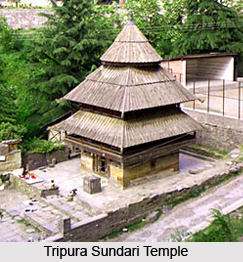 Tripuara Sundari Temple is situated in Naggar (the erstwhile capital of Kullu, founded by Raja Vishudhpal), and is a three-storeyed shrine with a colossal wooden structure. The temple resembles a pagoda and its architectural design follows the Hadimba Devi temple in Manali. There is a canopy with a pinnacle at the top, which is crowned by a chhatra. Images of various gods and goddesses can be witnessed in the Tripuara Sundari Temple. The temple is in close proximity to the Naggar Bus Station. However, some people are of the belief that the temple is in a shape of a web that was made by the Goddess after turning Herself into a spider. Raja Yashodhapal had constructed the Tripuara Sundari Temple. Sharhi yatra, a widely-accepted fair is held here in honour of the Goddess in the month of May. The temple consists of stone idols of Lord Ganesha, Lord Vishnu, Lord Brahma, Goddess Lakshmi, Lord Narayan and Shiva-Parvati. A 30cm idol of Tripura Rakshasa of Astdhatu (an assortment of eight metals) is also placed here.
Tripuara Sundari Temple is situated in Naggar (the erstwhile capital of Kullu, founded by Raja Vishudhpal), and is a three-storeyed shrine with a colossal wooden structure. The temple resembles a pagoda and its architectural design follows the Hadimba Devi temple in Manali. There is a canopy with a pinnacle at the top, which is crowned by a chhatra. Images of various gods and goddesses can be witnessed in the Tripuara Sundari Temple. The temple is in close proximity to the Naggar Bus Station. However, some people are of the belief that the temple is in a shape of a web that was made by the Goddess after turning Herself into a spider. Raja Yashodhapal had constructed the Tripuara Sundari Temple. Sharhi yatra, a widely-accepted fair is held here in honour of the Goddess in the month of May. The temple consists of stone idols of Lord Ganesha, Lord Vishnu, Lord Brahma, Goddess Lakshmi, Lord Narayan and Shiva-Parvati. A 30cm idol of Tripura Rakshasa of Astdhatu (an assortment of eight metals) is also placed here.
Tourism in Kullu
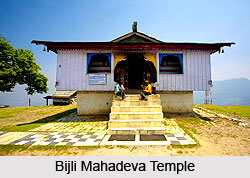 Tourism in Kullu in Kullu District of Himachal Pradesh offers an enriching and memorable experience to the travellers as this place is situated against a beautiful backdrop. Kullu Valley in Himachal Pradesh is situated on the banks of Beas River. It is located at an altitude of about 3,900 ft (1,200 metres).
Tourism in Kullu in Kullu District of Himachal Pradesh offers an enriching and memorable experience to the travellers as this place is situated against a beautiful backdrop. Kullu Valley in Himachal Pradesh is situated on the banks of Beas River. It is located at an altitude of about 3,900 ft (1,200 metres).
This city of Himachal Pradesh is nestled between Dhauladhar and Pir-Panjal range, with full of its mind pleasing natural beauty. Kullu is famous for apple orchards, old wooden temples and endless picturesque beauty.
Tourism in Kullu comprises ample scope for trekking, climbing and angling, and big and small game are plentiful in its forests. The snowcapped mountains and the cascading rivers are reasons enough to tour this serene valley that lies in the lap of the Himalaya Mountains. Though famous for its tourist attractions, Kullu has its share of history as well. In ancient times it was known as Kulanthpitha, meaning the end of the inhabited world.
Pilgrimage Tourism in Kullu
Kullu is also famous for its ancient temples that add to the serenity of the place. The most remarkable temple of Kullu is that of Bijli Mahadev temple which is located a few miles away from Kullu. The temple is built of large blocks of stone without the use of cement and its 20 metres tall pole is reputed to attract lightning which, according to the local legend, is an expression of divine blessing. Interestingly, every time the flagstaff is struck by lightning, the Shiva linga inside the temple is shattered. It is put back together each time by the priest and covered with `sattoo` (a paste of roasted gram and wheat powder) and butter. The image, thus restored, stands till another similar flash repeats `the miracle`. Besides this temple, another popular temple is Raghunath Temple, Kullu.
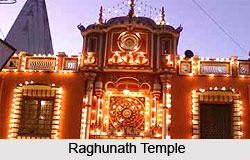 This shrine is located in the city of Raghunathpur and is at a distance of 15 minutes from the main bus stand at Kullu. As per legends the idol worshipped here is the same idol that was made by Lord Rama while performing Aswamedha Yagna. Dussehra festival is celebrated with much pomp and gaiety here attracting a large number of devotees from far and wide.Further, there is the Vaishno Devi Temple at a distance of 4 kms from Kullu and the Triyug Narayan Temple in Dyar. Parashuram Temple is another temple of Kullu that is worth visiting. Bajaura is 15 kms away from Kullu valley and is renowned for Basheshwar Mahadev Temple and its sculptural works in stone. This temple is visited by a large number of tourists throughout the year. Kullu Dussehra is another major celebration that attracts the people from far and wide.
This shrine is located in the city of Raghunathpur and is at a distance of 15 minutes from the main bus stand at Kullu. As per legends the idol worshipped here is the same idol that was made by Lord Rama while performing Aswamedha Yagna. Dussehra festival is celebrated with much pomp and gaiety here attracting a large number of devotees from far and wide.Further, there is the Vaishno Devi Temple at a distance of 4 kms from Kullu and the Triyug Narayan Temple in Dyar. Parashuram Temple is another temple of Kullu that is worth visiting. Bajaura is 15 kms away from Kullu valley and is renowned for Basheshwar Mahadev Temple and its sculptural works in stone. This temple is visited by a large number of tourists throughout the year. Kullu Dussehra is another major celebration that attracts the people from far and wide.
Nature Tourism in Kullu
Kullu, also known as the `Silver Valley`, is the favourite haunt for the adventure seekers. Trekking, river rafting on Beas River, paragliding, skiing, mountaineering, camping and other adventure sports are common in this valley. Besides this, Kullu has numerous places for trout fishing. These include Katrain, Raison, Kasol and Naggar, along river Tirthan near Larji, in the Sainj Valley and in the Hurla Khud. The valley is the nucleus of several trek routes. Some major ones are over the Chander Khani Pass. Another quaint place is Kaisdhar. Here nature is in its pristine forms. Kaisdhar, too, is situated at a distance of 15 kms from Kullu. Kasol, 40 kms away, is perched on the banks of river Parvati. The well-known hot springs of Manikaran are just 45 kms from Kullu town. The road from Kullu to Manali runs along the swift and rushing torrents of the Beas River. It is flanked by lofty mountains and spreading forests. On this road is Katrain, famous for its fruit orchards and its trout hatchery. Near Katrain, across the river, is a small town Naggar, where the medieval world still survives. The town has been made famous by the late Russian painter, Nicholas Roerich, whose gallery can be seen there.
Visiting Information
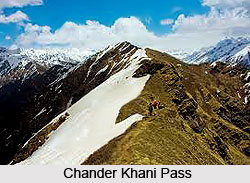 The nearest railway stations are at Chandigarh The hill station of Kullu is easily accessible by railways, roadways and airways. The airport at Bhuntar is 10 km from Kullu. Taxis and buses are easily available to reach the valley. The nearest railway stations are at Chandigarh (Punjab ) and Kiratpur, Uttar Pradesh. The closest narrow gauge railhead is at Jogindernager, 95 km from Kullu.
Kullu is at a distance of 530 km from Delhi via Mandi and 240 km from Shimla. From Delhi and Shimla, luxury buses are available for Kullu. Kullu is easily accessible from all the major cities of Himachal Pradesh like Shimla, Dharamsala, Manali and Dalhousie.
The best time to visit Kullu is October, when the Dussehra festival is celebrated. The main highlight of the fair is the dance competition held every evening. Kullu in Himachal Pradesh is also famous for its handicrafts and caps. All the places of Kullu are worth seeing.
The nearest railway stations are at Chandigarh The hill station of Kullu is easily accessible by railways, roadways and airways. The airport at Bhuntar is 10 km from Kullu. Taxis and buses are easily available to reach the valley. The nearest railway stations are at Chandigarh (Punjab ) and Kiratpur, Uttar Pradesh. The closest narrow gauge railhead is at Jogindernager, 95 km from Kullu.
Kullu is at a distance of 530 km from Delhi via Mandi and 240 km from Shimla. From Delhi and Shimla, luxury buses are available for Kullu. Kullu is easily accessible from all the major cities of Himachal Pradesh like Shimla, Dharamsala, Manali and Dalhousie.
The best time to visit Kullu is October, when the Dussehra festival is celebrated. The main highlight of the fair is the dance competition held every evening. Kullu in Himachal Pradesh is also famous for its handicrafts and caps. All the places of Kullu are worth seeing.
